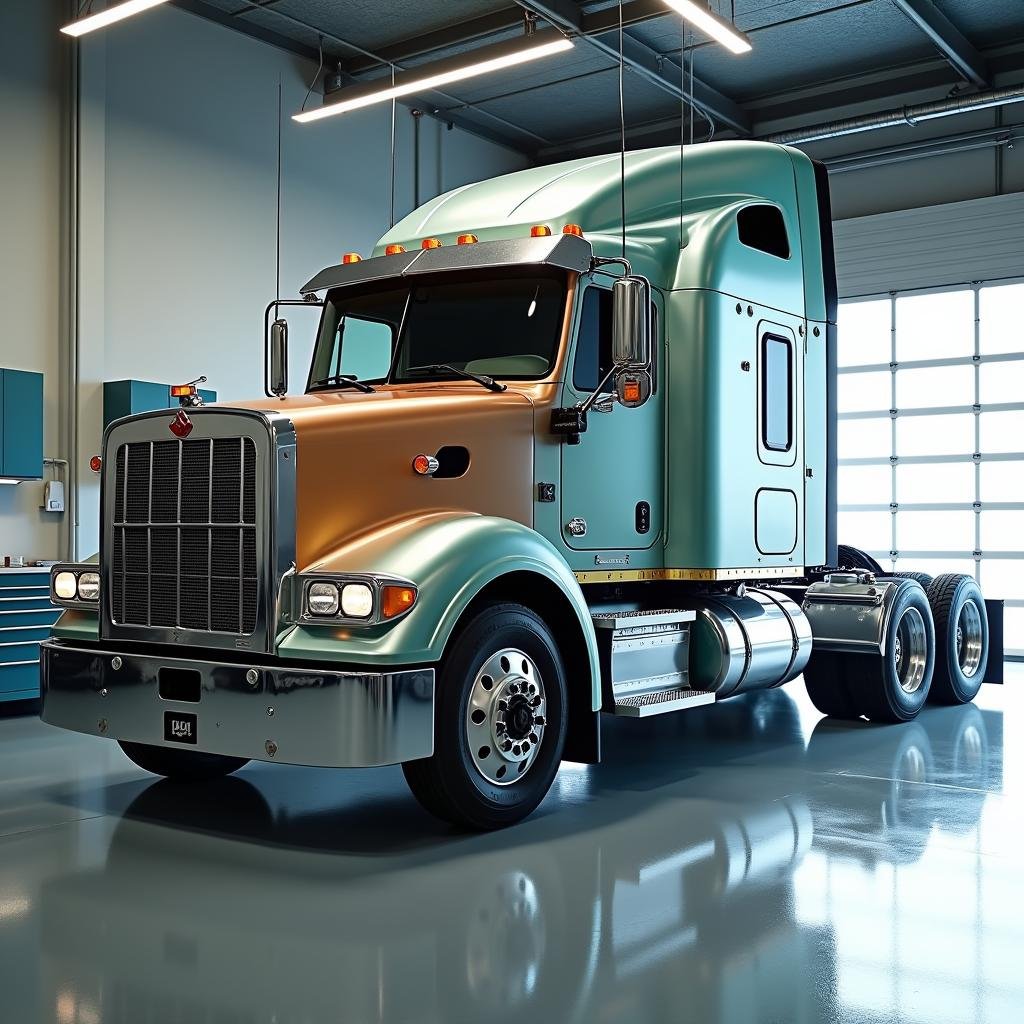Keeping your vehicles on the road and in top condition is essential for any business that relies on transportation. A comprehensive fleet maintenance strategy isn’t just about fixing problems as they arise—it’s about preventing issues before they impact your operations. Whether you manage a small fleet of delivery vans or oversee dozens of heavy-duty trucks, a systematic maintenance approach can save you thousands in repairs, reduce downtime, and extend vehicle lifespan.
Why Fleet Maintenance Matters to Your Bottom Line
The financial impact of neglected fleet maintenance extends far beyond the immediate repair costs. According to a Federal Motor Carrier Safety Administration study, approximately 27% of large truck crashes involve brake problems that proper maintenance could have prevented. When you factor in lost productivity, missed deliveries, customer dissatisfaction, and potential regulatory fines, the true cost of maintenance neglect becomes staggering.
Implementing a thorough fleet maintenance checklist doesn’t just prevent breakdowns—it transforms your vehicles from potential liabilities into reliable assets. Let’s explore the 12 critical maintenance points that should be part of your regular vehicle inspections.
The 12-Point Fleet Maintenance Checklist Every Manager Needs
Developing a standardized fleet maintenance protocol ensures nothing falls through the cracks. Each of these 12 points addresses vital systems that affect vehicle performance, safety, and longevity.
1. Braking System Inspection
Your vehicles’ braking systems are perhaps the most critical safety component. Regular inspections should include:
- Brake pad thickness measurement (replace when less than 1/4 inch remains)
- Brake fluid level and condition checks
- Inspection of brake lines for leaks or damage
- Brake rotor and drum evaluation for scoring, warping, or other damage
- Testing of the emergency brake functionality
Don’t wait for warning signs like squealing, grinding, or extended stopping distances. By then, you’re already risking safety and facing more extensive repairs. For commercial vehicles, brake issues are the most common violation during roadside inspections, potentially resulting in vehicles being placed out of service.
2. Fluid Levels and Quality Assessment
Vehicles depend on various fluids to function properly. Your preventative maintenance schedule should include checking:
- Engine oil (level and condition)
- Transmission fluid
- Power steering fluid
- Brake fluid
- Coolant/antifreeze
- Windshield washer fluid
Each fluid should be at the appropriate level and in good condition. Dark, cloudy, or gritty fluids often indicate problems that need addressing. Remember that different vehicles may require specific fluid types—consult your manufacturer recommendations rather than using universal products that could cause damage.
3. Tire Condition and Pressure Monitoring
Tires affect fuel efficiency, handling, braking distance, and overall safety. Your tire maintenance routine should include:
- Pressure checks (including spares) at least monthly
- Tread depth measurement (replace when less than 4/32″ for commercial vehicles)
- Inspection for uneven wear patterns that might indicate alignment issues
- Checking for damage, bulges, or embedded objects
- Rotation according to manufacturer schedules (typically every 5,000-8,000 miles)
Proper tire maintenance can improve fuel economy by up to 3% and extend tire life by 20% or more. Consider implementing a tire pressure monitoring system (TPMS) across your fleet for real-time alerts about pressure issues.
4. Electrical System Evaluation
Electrical failures can strand vehicles and disable critical components. Regular electrical system checks should include:
- Battery testing for charge level and condition
- Alternator output verification
- Starter functionality assessment
- Inspection of all lights (headlights, brake lights, turn signals, etc.)
- Checking of fuses, wiring, and connections
Modern vehicles rely heavily on electronics, making electrical system maintenance increasingly important. Battery terminals should be clean and tight, with no visible corrosion. Drivers should report any warning lights, electrical issues, or starting problems immediately.
5. Engine Performance Analysis
The engine is the heart of your vehicle, and monitoring its performance is essential for fleet maintenance optimization. Include these checks:
- Air filter inspection and replacement
- Spark plug condition (for gasoline engines)
- Belt and hose examination for cracks, fraying, or leaks
- Fuel filter replacement according to schedule
- Exhaust system inspection for leaks or damage
Additionally, track fuel consumption for each vehicle. Sudden changes in fuel efficiency often indicate developing engine problems. Consider using diagnostic tools to monitor engine performance metrics and catch issues before they escalate.
6. Transmission and Drivetrain Check
Transmission repairs rank among the most expensive vehicle fixes. Protect your investment with regular:
- Transmission fluid checks for level, color, and smell
- Filter replacements according to manufacturer recommendations
- Inspection for leaks around seals and gaskets
- Differential fluid level checks
- Driveshaft and CV joint inspection
Don’t ignore warning signs like delayed shifting, unusual noises, or vibrations. These symptoms rarely resolve themselves and typically worsen over time, potentially leading to complete transmission failure.
7. Cooling System Maintenance
Overheating can cause catastrophic engine damage. Your cooling system checks should include:
- Radiator inspection for leaks or blockages
- Coolant level and condition assessment
- Pressure testing of the cooling system
- Water pump functionality check
- Thermostat operation verification
Coolant should be flushed and replaced according to the manufacturer’s schedule, typically every 30,000 to 60,000 miles. Using the correct coolant type is crucial—mixing incompatible coolants can cause corrosion and system damage.
8. Suspension and Steering Inspection
Suspension and steering components affect handling, comfort, and tire wear. Include these items in your inspection:
- Shock absorber and strut testing
- Ball joint and tie rod inspection
- Steering linkage examination
- Wheel alignment check
- Bushing condition assessment
Warning signs of suspension problems include uneven tire wear, excessive bouncing after bumps, or vehicle pulling to one side. Address these issues promptly to prevent accelerated tire wear and compromised handling.
9. Exhaust System Evaluation
A properly functioning exhaust system is essential for emissions compliance and engine performance. Check for:
- Leaks at connection points
- Damaged or corroded pipes
- Muffler condition
- Catalytic converter functionality
- Exhaust gas recirculation (EGR) system operation
For diesel vehicles, ensure proper maintenance of the Diesel Particulate Filter (DPF) and Selective Catalytic Reduction (SCR) systems. These components are critical for emissions compliance and can be expensive to replace if neglected.
10. Cabin Filters and HVAC System
Driver comfort and air quality affect productivity and health. Include these checks:
- Cabin air filter replacement
- Air conditioning performance testing
- Heater functionality verification
- Blower motor operation check
- Inspection for unusual odors or reduced airflow
Replace cabin air filters at least annually or more frequently in dusty environments. This simple maintenance task improves air quality and reduces strain on the HVAC system.
11. Windshield and Wiper Maintenance
Visibility is a crucial safety factor. Regular checks should include:
- Windshield inspection for chips or cracks
- Wiper blade condition assessment
- Washer fluid level and spray pattern check
- Rear window defroster functionality test
- Mirror condition and adjustment
Small windshield chips should be repaired promptly before they expand into cracks requiring full replacement. Wiper blades typically need replacement every 6-12 months, depending on usage and environmental conditions.
12. Safety Equipment Verification
Ensuring all safety equipment functions properly is a legal requirement and moral obligation. Check:
- Seatbelt condition and operation
- Airbag system warning lights
- Horn functionality
- Emergency equipment (fire extinguisher, first aid kit, reflective triangles)
- Backup camera and sensor systems
For commercial vehicles, also verify the presence and condition of required DOT equipment and documentation. According to the NHTSA, properly functioning safety systems significantly reduce accident rates and severity.
Implementing Your Fleet Maintenance Schedule
Having a checklist is only valuable if it’s consistently implemented. Establish a fleet maintenance schedule that accounts for:
- Mileage-based maintenance: Certain services like oil changes must occur at specific mileage intervals
- Time-based maintenance: Some components need attention based on time rather than mileage
- Usage-based maintenance: Vehicles used in severe conditions (extreme temperatures, dusty environments, frequent short trips) need more frequent service
- Seasonal maintenance: Prepare vehicles for winter or summer conditions with specialized checks
Consider implementing fleet management software to track maintenance schedules, service history, and upcoming needs. These systems can provide automated reminders, track parts inventory, and generate reports to identify patterns of vehicle issues.
Training Drivers for Daily Vehicle Inspections
Your drivers are your first line of defense against developing vehicle problems. Institute a daily pre-trip inspection routine that includes:
- Walking around the vehicle to check for visible damage or leaks
- Testing all lights and signals
- Checking tire condition and pressure
- Verifying fluid levels
- Testing brakes and steering before departing
Educate drivers about warning signs that require immediate attention: unusual noises, warning lights, handling problems, or performance issues. Establish a clear reporting procedure for maintenance concerns and emphasize that reporting problems early prevents costlier repairs later.
According to a Commercial Vehicle Safety Alliance report, driver pre-trip inspections can identify up to 85% of the issues that would be flagged during roadside inspections, significantly reducing the risk of violations and out-of-service orders.
Measuring the ROI of Your Fleet Maintenance Program
To justify your fleet maintenance investment, track key performance indicators:
- Vehicle downtime percentage
- Average repair cost per mile
- Frequency of roadside breakdowns
- Percentage of preventive vs. reactive maintenance
- Fuel efficiency trends
- Vehicle lifespan compared to industry averages
Well-maintained fleets typically achieve 15-30% lower lifetime operating costs compared to reactively maintained fleets. Document these savings to demonstrate the value of your maintenance program to stakeholders.
Conclusion: Transforming Maintenance from Expense to Investment
A comprehensive fleet maintenance checklist isn’t just about preventing breakdowns—it’s about transforming your approach to vehicle management. By implementing the 12-point checklist outlined above, you shift from reactive repairs to proactive care, ultimately extending vehicle life, improving safety, and reducing total ownership costs.
Remember that consistency is key. The most elaborate maintenance program provides little benefit if it’s not followed rigorously. Integrate these checks into your standard operating procedures, train your team thoroughly, and use technology to streamline the process.
Your vehicles are valuable assets that directly impact your ability to serve customers, meet deadlines, and operate profitably. Treat them accordingly with a maintenance approach that addresses problems before they arise.
Ready to optimize your fleet services and implement a more effective maintenance strategy? Contact our team today for a consultation on how we can help you develop a customized maintenance program that keeps your vehicles running at peak performance while minimizing costs and downtime. Your fleet—and your bottom line—will thank you.


